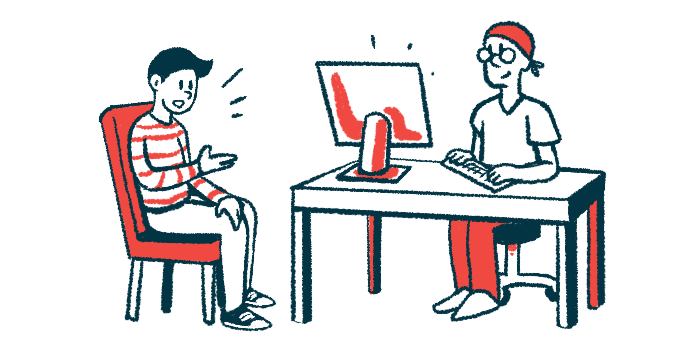People with arthritis are less likely to be employed: UK analysis
Women, people without college degrees most likely to be affected

Adults with ankylosing spondylitis and other forms of arthritis are significantly less likely to be employed than people without arthritis, according to a new analysis from the U.K.
Results suggest the effect of arthritis on employment is especially pronounced in certain demographic groups, particularly women and people without college degrees.
“We already know that arthritis is more common among women and people from lower socioeconomic backgrounds. Our new findings show that substantial inequalities also exist in terms of how the work outcomes of these groups are affected by arthritis,” said Adam Martin, PhD, a professor at the University of Leeds School of Medicine and co-author of the study, in a university news release.
The findings underscore a need for governments and employers to consider interventions to support people with arthritis who want to continue to work, Martin said. “In light of this research, people living with arthritis told us that potential interventions could involve making appropriate adjustments to the working environment, tackling workplace discrimination and supporting changes in people’s roles.
“Existing evidence suggests that providing personalized case management by an occupational health practitioner could help to encourage constructive dialogue between employees, healthcare practitioners and employers,” Martin said. “Our study indicates that such support could be especially cost-effective if it is designed for and targeted for the people we identified who are most at risk of poor work outcomes.”
The study, “How does arthritis affect employment? Longitudinal evidence on 18,000 British adults with arthritis compared to matched controls,” was published in Social Science & Medicine.
Arthritis refers to a group of conditions that cause pain and inflammation in joints. Ankylosing spondylitis is a specific form of arthritis marked by inflammation in the joints of the lower spine.
Symptoms of ankylosing spondylitis and other forms of arthritis can cause substantial impairment in daily life, and may make it more difficult for patients to work. The news release cites the experience of Sandra Purdy, 61, a Leeds resident who lives with ankylosing spondylitis. Her symptoms began interfering with work at an early age.
“I had problems with pain since my late teens, and was misdiagnosed several times. When I was younger I had manual jobs but the pain meant I often couldn’t work. … Eventually I started looking for an office job which I thought would be more manageable. I got a job in a bank, but sitting down all day was worse,” Purdy said. “I have always worried about losing my job, especially at first. I left school with no qualifications so I had to sit exams in English and maths to get work in an office.”
Despite anecdotal reports that arthritis can interfere with work, not much formal research into how arthritis affects employment has been done.
Effect of arthritis on employment
“Understanding the degree to which arthritis affects people’s [decisions about working] and how this varies between different groups and at different life stages is fundamental to informing decisions by policymakers, employers and healthcare systems around maintaining employment opportunities and supporting employees,” the researchers wrote.
Using data from 2001-2019 through a series of national surveys, the researchers identified 18,014 adults with various forms of arthritis, as well as an equal number of controls without it who were matched to patients in age, sex, ethnicity, marital status, number of children, employment status, education level, annual earnings, and hours worked. The researchers constructed statistical models to compare work-based outcomes in the two groups.
Results showed that people in the arthritis group were significantly less likely to be employed, by about 3% overall, though the effect of arthritis varied markedly based on demographic factors.
Arthritis reduced the likelihood of employment particularly among women and people who didn’t have college degrees, results showed. For example, models suggested a 50-year-old man with a college degree would be about 2% less likely to be employed if he had arthritis. A 50-year-old woman without a degree, arthritis was associated with an 11% reduced likelihood of employment.
The effect also varied based on the type of employment. People in fields that require less formal education, such as bartenders or drivers, tended to be more affected by arthritis than those in high-educated professions like lawyers and doctors. Employees of small, private companies also tended to be more affected by arthritis than those working at large companies or in the public sector.
Arthritis was associated with a reduction in overall income by about 4% overall, results also showed. This effect was more pronounced among men holding college degrees and those working intermediate and highly educated occupations.
The findings highlight areas where people with arthritis may benefit from support and accommodations to help them make the most of life while navigating the disease, including working if they choose to.
Purdy described how her current employer allows her to work around her ankylosing spondylitis: “I found a new job with a more understanding employer, where I could move about during the day. I now have a management role so I’m less customer-facing, and I can work from home.” She acknowledges that not every person has these accommodations available to them, however. “I hear a lot of people at my hospital patient participation group talking about how they have been treated and their employers aren’t great. Patients need better access to diagnostics and more joined up thinking between employers and the health service.







